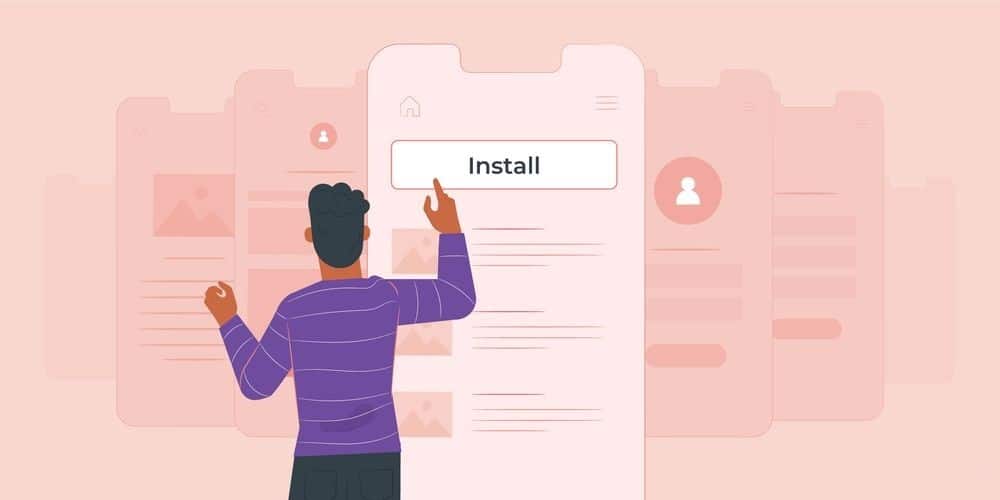Exploring FinTech Mobile App Development Nowadays: How to Enter a Promising Business
Are you wondering how to develop a fintech app? Fintech, or financial technology, encompasses various industries and applications. Any industry that utilizes technology to improve or automate financial services can be considered FinTech. Examples include:
- Banking: Digital banking platforms, mobile wallets, online payments, blockchain applications, robo-advisors, etc.
- Insurance: Online insurance quote comparison tools, parametric insurance, claims management platforms, etc.
- Investment: Online stock trading platforms, crowdfunding platforms, algorithmic trading, etc.
- Lending: Peer-to-peer lending platforms, microloan providers, alternative credit scoring models, etc.
- Payments: Mobile wallets, contactless payments, point-of-sale systems, cross-border payment solutions, etc.
- Personal Finance Management: Budgeting apps, expense tracking tools, financial planning platforms, etc.
If you are interested in fintech mobile app development, keep reading (also, please see the Topflight guide)!
Building a fintech app for the times
The FinTech app landscape is diverse and continuously evolving. Before we delve into how to build a fintech app, we have to decide which app to create. Here are some key segments to consider:
- Personal Finance Management: Apps that help users track income and expenses, manage budgets, and achieve financial goals.
- Payments and Wallets: Apps for secure and convenient mobile payments, contactless transactions, and digital currency management.
- Investment and Trading: Platforms for online stock trading, portfolio management, and access to investment opportunities.
- Lending and Borrowing: Apps facilitating peer-to-peer lending, microloans, and alternative financing options.
- Insurance and Risk Management: Platforms for comparing insurance policies, managing claims, and offering risk assessment tools.
How to develop a fintech app
Developing a fintech app takes dedication, research, and careful planning. Let’s take a look at the different steps.
Identifying Your Target Audience
Defining your target audience is critical for tailoring your app’s features and functionalities. Consider factors like:
- Demographics: Age, income, location, and tech-savviness.
- Financial Needs and Goals: Budgeting, saving, investing, or seeking loans.
- Existing Financial Habits: Traditional banking, mobile wallets, or crypto usage.
Prioritizing Security and Regulatory Compliance
FinTech apps deal with sensitive financial data, demanding robust security measures. Ensure your app:
- Implements encryption and secure authentication protocols.
- Complies with relevant regulations like GDPR and PCI DSS.
- Conducts regular security audits and penetration testing.
- Offers transparent data privacy policies.
Designing a User-Friendly Interface
An irreproachable and intuitive user experience is key to user adoption. Focus on:
- Simple and straightforward navigation.
- Minimalistic and uncluttered design.
- Personalized dashboards and recommendations.
- Contextual help and support features.
Integrating Cutting-Edge Technology
Embrace emerging technologies to enhance your app’s functionality and user experience. Seeking expertise in financial services technology consulting can provide valuable insights into utilizing emerging technologies effectively, ensuring your FinTech app remains competitive and compliant in the rapidly evolving digital landscape. Consider artificial intelligence (AI) for personalized financial advice and insights, blockchain for secure and transparent transactions, big data analytics for user behavior understanding and targeted marketing, and more.
Building for Scalability and Growth
As your user base expands, your app needs to adapt. Ensure you use modular architecture, flexible backend systems, and cloud-based infrastructure for efficient scalability, continuous performance monitoring, and optimization.
Testing and Deployment
The work never stops when you create a fintech app. Thorough testing is essential for a successful launch. Conduct unit testing for individual components and integration testing for seamless functionality.
Ongoing Maintenance and Marketing
After the app launches, you’ll need to conduct regular updates with new features and bug fixes. You’ll also need excellent customer support and adapt your product to new trends.
Legal Considerations
From data privacy and cybersecurity to anti-money laundering and consumer protection, FinTech companies must tread a delicate line. Balancing innovation and compliance requires a deep understanding of relevant laws and regulations, ensuring secure and trustworthy financial services. Data privacy laws like GDPR and CCPA demand stringent data handling practices, while AML/KYC regulations require robust customer identification and verification processes. Consumer protection laws govern fair lending practices and dispute resolution mechanisms. Staying abreast of evolving regulations and proactively building compliance into business models is essential for FinTech companies to thrive in a dynamic and increasingly complex legal landscape.
Conclusion
Developing a successful FinTech mobile app requires a strategic approach, an understanding user needs, and continuous innovation. By prioritizing security, user experience, and cutting-edge technology, you can create an app that empowers users, disrupts the financial landscape and thrives in this dynamic ecosystem. Remember, the FinTech world is constantly evolving, so stay agile, adapt to new trends, and always strive to deliver value to your users.
Now that you know how to develop a fintech app, you can start your journey. These guidelines will be helpful, undoubtedly: https://topflightapps.com/fintech-app-development/




